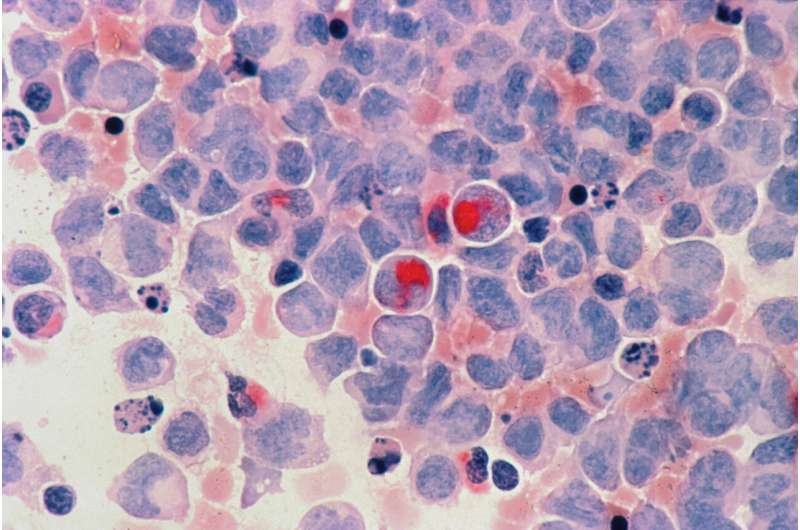Exploring novel mechanisms and therapeutic targets for acute myeloid leukemia

Patients with acute myeloid leukemia, the most common type of adult blood cancer, show large-scale genomic mutations and altered DNA folding patterns that could help identify potential therapeutic targets, according to a Northwestern Medicine study published in Nature.
Feng Yue, Ph.D., the Duane and Susan Burnham Professor of Molecular Medicine, was senior author of the study.
More than 20,000 patients are diagnosed with acute myeloid leukemia (AML) in the United States annually, according to the American Cancer Society and prognosis is grim, with a five-year survival rate of only 30 percent.
AML is caused when myeloid cells in bone marrow interfere with the production of other blood-producing cells. AML can present as different combinations of genomic mutations in different patients. These mutations disrupt proper cell functioning, including the organization of chromatin 3D structures that regulate cell replication, differentiation transcription.
Different subtypes of AML are driven by these distinct genomic mutations, which creates a roadblock for treatment—patients with different subtypes can respond differently to the same therapy.
"Therefore, it is crucial to understand how those subtype-defining mutations give rise to the leukemia cell phenotype through changing the chromatin 3D structure," said Yue, who is also a professor of Biochemistry and Molecular Genetics, of Pathology and director of the Center for Cancer Genomics at the Robert H. Lurie Comprehensive Cancer Center of Northwestern University.
In the current study, Yue and colleagues used deep sequencing and whole-genome sequencing techniques to analyze blood samples from patients with and without AML, finding that patients with AML harbored large-scale genomic mutations. These mutations were associated with unique DNA folding patterns, or chromatin "loops" in AML cells. Additional genetic sequencing of these samples revealed thousands of novel loops that directly control key AML oncogenes.
To validate their findings, the investigators treated the AML cells with a DNA hypomethylating agent drug and used gene editing techniques to knock down the genes DNMT1, DNMT3A and DNMT3B, which are essential for DNA methylation and proper gene expression.
The team found that both the drug treatment and the gene knockdown changed genome folding patterns in the AML cells, suggesting that AML-specific DNA folding can in fact be reversed.
"All previous studies have been focused on 'enhancer' control units that can strengthen the gene expression. This is the first time that we've identified 'silencers' in leukemia or any cancer, which can shut down essential genes from long distance," Yue said.
Furthermore, these novel chromatin loops, gene activators and "silencers" could be used as potential therapeutic targets for AML, according to Yue.
"The restoration of pathogenic chromatin structure warrants further investigation into the targeted clinical usage of the existing drugs that could manipulate DNA methylation in myelodysplastic syndromes or leukemia," Yue added.
OCTOBER 28, 2022



